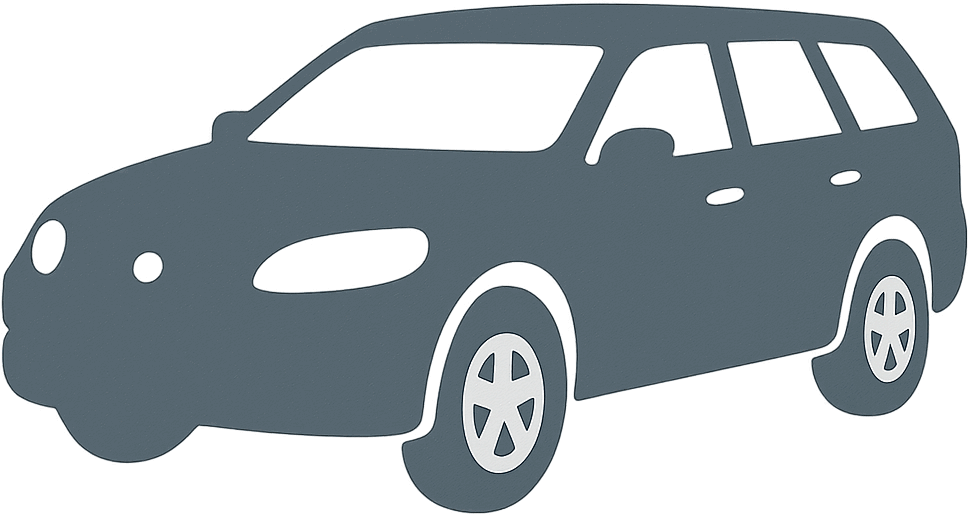 1956 DeSoto Firedome II Station Wagon (facelift 1956) Dimensions, Size & Specs
1956 DeSoto Firedome II Station Wagon (facelift 1956) Dimensions, Size & Specs
Measurements of the 1956 DeSoto Firedome II Station Wagon, engineered for optimal performance and comfort
| Dimensions | |
|---|---|
| Length: | 5552 mm218.6 in18.2 ft |
| Width: | 1989 mm78.3 in6.5 ft |
| Height: | 1539 mm60.6 in5.0 ft |
The 1956 DeSoto Firedome II Station Wagon (facelift model) represents the mid-1950s American automotive styling combined with the practicality of a spacious station wagon. Produced from 1955 to 1956, this generation of Firedome is characterized by its robust and elegant design, offering both family-friendly utility and classic DeSoto luxury. The Wagon measures an impressive 5552 mm (218.6 inches) in length, providing ample interior and cargo space for passengers and luggage alike. With a width of 1989 mm (78.3 inches), the vehicle boasts a wide stance that ensures stability and road presence. The height stands at 1539 mm (60.6 inches), giving it a balanced profile typical of the era's station wagons, combining headroom and aerodynamic considerations. This sizable vehicle reflects the design trends of the mid-50s, featuring chrome detailing, expansive windows for visibility, and a spacious interior layout perfect for families and long trips. The Firedome II was part of DeSoto's strong lineup before the brand ceased production in the early 1960s, making this generation a collectible classic today. Whether evaluated for historical interest or size comparison, the 1956 DeSoto Firedome II Station Wagon remains a significant example of American automotive design blending size, style, and functionality in one iconic package.
Discover the standout features that make the 1956 DeSoto Firedome II Station Wagon a leader in its class
Have a question? Please check our knowledgebase first.
The 1956 DeSoto Firedome II Station Wagon measures 5552 mm (218.5 inches) in length, making it quite substantial by 1950s standards. Its width stands at 1989 mm (78.3 inches), which provides a broad stance on the road improving stability and interior space. The vehicle's height is 1539 mm (60.6 inches), giving it a rounded yet not overly tall profile typical of classic station wagons of its era. These dimensions contribute to a spacious cabin and good road presence, characteristic of mid-1950s American family wagons.
At 1989 mm (78.3 inches) wide, the 1956 DeSoto Firedome II Station Wagon is wider than many modern sedans and even some SUVs. This width enhances interior comfort by providing expansive shoulder room for passengers, particularly in the front and rear bench seats. However, such width can make urban maneuvering or parking tighter in modern parking spaces, as parking infrastructure has downsized over the decades. Nevertheless, the extra width was common for vehicles of its class and era to maximize passenger and cargo space.
With a height of 1539 mm (60.6 inches), the 1956 DeSoto Firedome II Station Wagon is quite suitable for standard residential garages. Most modern garages have clearances between 1981 mm (78 inches or 6.5 feet) to 2133 mm (84 inches or 7 feet), so the car fits comfortably with ample overhead space. Its height does not pose any constraints, allowing easy storage without the need for modifications or special accommodations.
At 5552 mm (218.5 inches) in length, the 1956 Firedome II Station Wagon is considerably long, reflective of mid-20th-century American station wagons that emphasized roomy interiors and cargo space. This extended length can make parking in modern compact urban spaces more challenging, especially parallel parking spots designed for smaller cars. Maneuvering in tight city environments might require cautious planning. However, the long wheelbase contributes to a smooth ride and stable highway cruising, qualities valued in family-oriented wagons.
The 1956 DeSoto Firedome II Station Wagon was designed with ample cargo space typical of the era’s family wagons. Though exact cargo volume specifics are less commonly documented, its overall dimensions and wagon body style allowed for generous rear storage, especially with rear seats folded or removed. Compared to contemporaries such as the Chevrolet Nomad or Ford Ranch Wagon, the Firedome II offered competitive space, ensuring it met family hauling needs effectively. The tall roofline and flat floor gave it versatility uncommon in many modern compact SUVs.
The 1956 Firedome II Station Wagon was a facelifted version of the original Firedome Station Wagon (1952-1954). Dimensionally, the Firedome II grew slightly longer and wider, contributing to increased interior space and a more modern aesthetic appeal. Design upgrades included refreshed front grille styling and improved trim that gave the vehicle a sleeker and more contemporary 1950s look. Overall, the Firedome II improved upon its predecessor's comfort, utility, and visual presence while maintaining the robust mechanical characteristics that defined DeSoto's Firedome line.
When compared to similar mid-1950s American station wagons like the Chrysler Town & Country or Chevrolet Bel Air Wagon, the Firedome II stands out slightly for its width at 1989 mm (78.3 inches), which is on the broader side. Its length of 5552 mm (218.5 inches) positions it as one of the longer wagons of the time, contributing to more interior capacity and cargo volume. These dimensions paired with distinctive styling gave the Firedome II a commanding road presence, competing well in a market where spaciousness and style were key selling points.
Although precise weight data can vary, the 1956 DeSoto Firedome II Station Wagon typically weighed around 1800 to 1900 kilograms (approximately 4000 to 4200 pounds). This weight was standard for large American wagons of the era, impacting acceleration and fuel economy compared to lighter vehicles. The heavier body contributed positively to ride stability and a smooth cruiser experience on highways, but it required powerful V8 engines and robust suspension setups to maintain adequate performance and handling characteristics.
The 1956 Firedome II facelift marked an important evolution for the DeSoto Firedome Station Wagon. With refreshed styling cues like a bolder grille, updated lighting details, and subtle body contour changes, the vehicle maintained its classic charm while appearing more modern and upscale. These updates helped DeSoto compete against newer models during a flourishing automotive market in the mid-1950s, appealing strongly to buyers seeking both elegance and practicality in a large family wagon.
Yes, the 1956 DeSoto Firedome II Station Wagon fits comfortably inside a standard home garage. Typically, standard single-car garages provide internal dimensions around 2438 mm to 2743 mm (8 to 9 feet) wide and about 5486 mm to 6096 mm (18 to 20 feet) deep. The Firedome II is 1989 mm (78.3 inches) wide and 5552 mm (218.5 inches) long, which means it fits within the typical garage depth with little to moderate clearance. Its width also fits comfortably within garage widths, allowing enough space to open doors and maneuver inside the garage.
Discover similar sized cars.

| Production: | 1954-1955 |
|---|---|
| Model Year: | 1955 |
| Length: | 5552 mm218.6 in |
| Width: | 1989 mm78.3 in |
| Height: | 1539 mm60.6 in |
